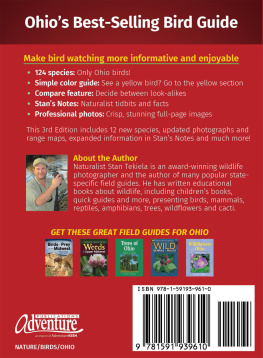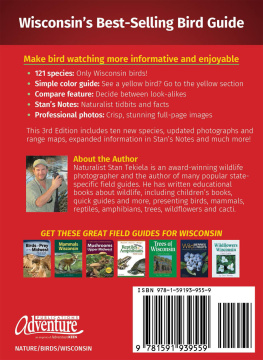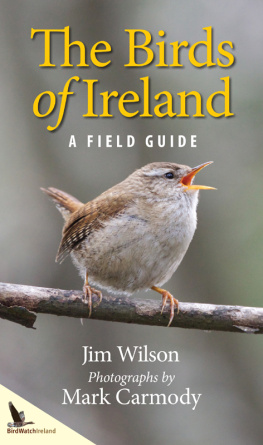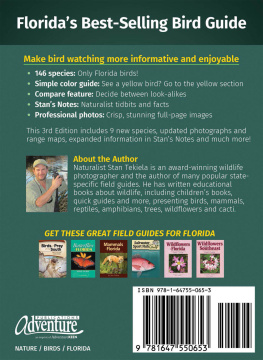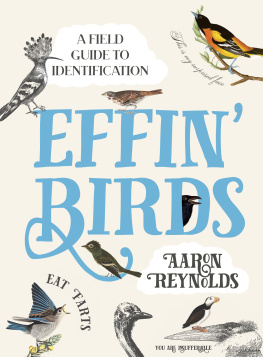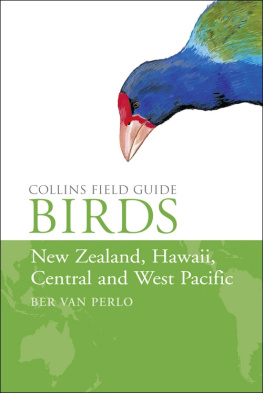Perlo - A field guide to the birds of Brazil
Here you can read online Perlo - A field guide to the birds of Brazil full text of the book (entire story) in english for free. Download pdf and epub, get meaning, cover and reviews about this ebook. City: USA;Brazil, year: 2009, publisher: Oxford University Press, genre: Home and family. Description of the work, (preface) as well as reviews are available. Best literature library LitArk.com created for fans of good reading and offers a wide selection of genres:
Romance novel
Science fiction
Adventure
Detective
Science
History
Home and family
Prose
Art
Politics
Computer
Non-fiction
Religion
Business
Children
Humor
Choose a favorite category and find really read worthwhile books. Enjoy immersion in the world of imagination, feel the emotions of the characters or learn something new for yourself, make an fascinating discovery.

- Book:A field guide to the birds of Brazil
- Author:
- Publisher:Oxford University Press
- Genre:
- Year:2009
- City:USA;Brazil
- Rating:4 / 5
- Favourites:Add to favourites
- Your mark:
- 80
- 1
- 2
- 3
- 4
- 5
A field guide to the birds of Brazil: summary, description and annotation
We offer to read an annotation, description, summary or preface (depends on what the author of the book "A field guide to the birds of Brazil" wrote himself). If you haven't found the necessary information about the book — write in the comments, we will try to find it.
Perlo: author's other books
Who wrote A field guide to the birds of Brazil? Find out the surname, the name of the author of the book and a list of all author's works by series.
A field guide to the birds of Brazil — read online for free the complete book (whole text) full work
Below is the text of the book, divided by pages. System saving the place of the last page read, allows you to conveniently read the book "A field guide to the birds of Brazil" online for free, without having to search again every time where you left off. Put a bookmark, and you can go to the page where you finished reading at any time.
Font size:
Interval:
Bookmark:
A FIELD GUIDE TO THE BIRDS OF BRAZIL

 Oxford University Press, Inc., publishes works that further Oxford Universitys objective of excellence in research, scholarship, and education. Oxford New York
Oxford University Press, Inc., publishes works that further Oxford Universitys objective of excellence in research, scholarship, and education. Oxford New YorkAuckland Cape Town Dar es Salaam Hong Kong Karachi
Kuala Lumpur Madrid Melbourne Mexico City Nairobi
New Delhi Shanghai Taipei Toronto With offices in
Argentina Austria Brazil Chile Czech Republic France Greece
Guatemala Hungary Italy Japan Poland Portugal Singapore
South Korea Switzerland Thailand Turkey Ukraine Vietnam Copyright 2009 by Oxford University Press, Inc. Published by Oxford University Press, Inc.
198 Madison Avenue, New York, New York 10016 www.oup.com Oxford is a registered trademark of Oxford University Press All rights reserved. No part of this publication may be reproduced, stored in a retrieval system, or transmitted, in any form or by any means, electronic, mechanical, photocopying, recording, or otherwise, without the prior permission of Oxford University Press. Library of Congress Cataloging-in-Publication Data
Perlo, Ber van.
A field guide to the birds of Brazil / Ber van Perlo.
p. cm.
Includes bibliographical references and index.
ISBN 978-0-19-530154-0; 978-0-19-530155-7 (pbk.)
1.
BirdsBrazilIdentification. I. Title.
QL689.B8P44 2009
598.0981dc22 2008018823 9 8 7 6 5 4 3 2 1 Printed in China
on acid-free paper
The books low weight and compact size make it easy to carry around and consult in the field. Help in identifying difficult species can be found in more detailed regional bird books, which can be consulted at home or on the road. Sound recordings from commercial CDs and DVDs transferred to your iPod or other MP3 player can be an important supplementary aid in the field. To compose a work like this single-handedly, you need the support and help of dedicated friends. I was very lucky to find people willing to coach me through the process of composing the book, comment on its structure, supply basic and additional information about the avifauna and geography of Brazil, send hundreds of reference photos, both of living birds and museum specimens, point out important websites, and suggest improvements, corrections, and additions to plates, maps, and draft text. It is, however, not their responsibility but mine if the book contains errors.
My heartfelt thanks go to Rasmus Bgh in Denmark, my indefatigable supporter in every respect, who solved taxonomic puzzles, found difficult-to-trace articles, provided many photos, and supplied numerous contributions especially to the sections on identification features and habitats. I am also extremely thankful to my Brazilian friends: to Fabio Olmos, who helped revise this guide with the support of the Wetlands Trust/UK and the Museu de Zoologia da Universidade de So Paulo (MZUSP), for his prompt, authoritative comments on draft text and plates and for the many photos of museum specimens and Brazilian landscapes; and to Fernando C. Straube and Alberto Urben-Filho, who sorted out systematic riddles and gave extensive suggestions for improvement of text and plates. I thank Doug Stotz for his comments on my draft text and plates; Andy Foster, bird guide and owner of the Serra dos Tucanos lodge, who introduced me to the wonderful Brazilian bird world; Nicholas Locke, President of R.E.G.U.A. (Reserva Ecologica de Guapi Assu, which protects one of the last stands of tropical rainforest left in the severely depleted Atlantic Rainforest), whose help is greatly appreciated; and Bernard Geling, owner of the site www.birdsounds.nl , for his contributions. Research was done at the British Museum of Natural History in Tring, where the support and assistance of the staff, especially of Robert Prys-Jones and Katrina Cook, was very helpful.
In going through the collection in Tring, Krys Kazmierczak, my old friend from A Fieldguide to the Birds of the Indian Subcontinent, lent me a hand; his help and his other contributions to this work are very much appreciated. I am also grateful to Peter J. Prescott, senior editor at Oxford University Press, who made the achievement of this work possible, and to Kaity Cheng, Alycia Somers, Tisse Takagi, editorial assistants, and to all the other people at Oxford University Press that I came into contact with for all their help and their patience with me. Eu sou muito grato a Sra. Sonia Silva Maia de Cachoeiras de Macacu pela ajuda com as tradues para o portugus.
 A FIELD GUIDE TO THE BIRDS OF BRAZIL
A FIELD GUIDE TO THE BIRDS OF BRAZIL  A FIELD GUIDE TO THE BIRDS OF BRAZIL
A FIELD GUIDE TO THE BIRDS OF BRAZIL Most people live in the eastern parts of the country, especially in the states of So Paulo and Rio de Janeiro. The federative republic of Brazil can be divided into five major regions (Sul, Centro-Oueste, Sudeste, Nordeste, and Norte) comprising 26 states and the Distrito Federal of Brasilia (). 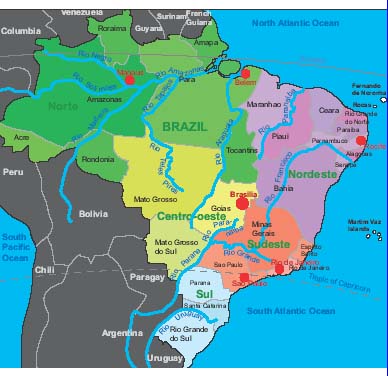 FIGURE 1 Overview of Brazil 1.2 Biogeography This paragraph gives a short overview of the factors that determine the presence and distribution of bird species in Brazil. 1.2.1 CLIMATE Based on temperature and rainfall (), it is possible to distinguish several regions in Brazil with different climatic conditions. Equatorial zone. In the equatorial zone in the north the annual average temperature lies between 24 and 27 C with little seasonal variation, while the annual average rainfall is high (> 3000 mm). In the eastern subregion (where the equator enters the country near Belm), the rainfall in the wet season (JanuaryMay) is 10 times higher ( 500 mm per month) than in the dry season ( 50 mm per month in SeptemberNovember).
FIGURE 1 Overview of Brazil 1.2 Biogeography This paragraph gives a short overview of the factors that determine the presence and distribution of bird species in Brazil. 1.2.1 CLIMATE Based on temperature and rainfall (), it is possible to distinguish several regions in Brazil with different climatic conditions. Equatorial zone. In the equatorial zone in the north the annual average temperature lies between 24 and 27 C with little seasonal variation, while the annual average rainfall is high (> 3000 mm). In the eastern subregion (where the equator enters the country near Belm), the rainfall in the wet season (JanuaryMay) is 10 times higher ( 500 mm per month) than in the dry season ( 50 mm per month in SeptemberNovember).
Font size:
Interval:
Bookmark:
Similar books «A field guide to the birds of Brazil»
Look at similar books to A field guide to the birds of Brazil. We have selected literature similar in name and meaning in the hope of providing readers with more options to find new, interesting, not yet read works.
Discussion, reviews of the book A field guide to the birds of Brazil and just readers' own opinions. Leave your comments, write what you think about the work, its meaning or the main characters. Specify what exactly you liked and what you didn't like, and why you think so.


